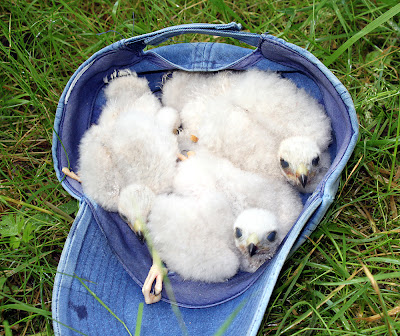The morning started at Knott End with the early tide and decent numbers of waders: 210 Oystercatcher, 95 Curlew, 70 Redshank and 12 Dunlin. At the jetty were just a single Eider and a Cormorant with 2 Pied Wagtail, and then it was up to Pilling before Gala festivities trapped me in the village.
Cormorant
For a week or more I’ve carried a couple of spring traps at Pilling way because the first autumn Wheatears always arrive back in early July. There was a smart, spotty looking juvenile at Pilling Water this morning and within a couple of minutes I’d ringed, measured and released it. With a wing length of 97 mm it was almost certainly a male, possibly from the Pennine uplands not too far away or even from across the bay where odd pairs still breed on Carnforth Marsh.
Wheatear juvenile
Wheatear juvenile
A day or two ago I noticed Skylarks carrying food to a nest which from the adults flight lines seemed not to be in a silage field this time. Birding was fairly quiet this morning which allowed more time to track the adults, and when found the nest was buried deep in a tuft of grass alongside a drainage ditch. The very downy young were just too small for a ring, despite the legs being almost fully developed. Better to ring the youngsters in a day or two provided the nest can be located again.
Skylark nest
Skylark
Other birds Lane Ends to Pilling Water: 2 Kestrel, 1 Sparrowhawk,1 Grey Heron, 1 Little Egret, 60 Curlew, 140 Lapwing, 22 Oystercatcher, 1 Common Sandpiper. Both hirundines and passerines proved hard to come by today, with just 15 Swallow, 8 House Martin and 5 Swift to report. Otherwise, 3 Meadow Pipit, 2 Pied Wagtail, 15 Goldfinch, 8 Linnet, 6 Greenfinch, 3 Corn Bunting, 1 Reed Bunting and the single Wheatear.
Still 2 Blackcap in loud song at Lane Ends, joined today by a Chiffchaff. On the water there, 2 Little Grebe and 9 Tufted Duck, the tufties including a female with 5 youngsters.
Tufted Duck
There’s more news and pictures from Another Bird Blog very soon.

















































.jpeg)





.jpg)












